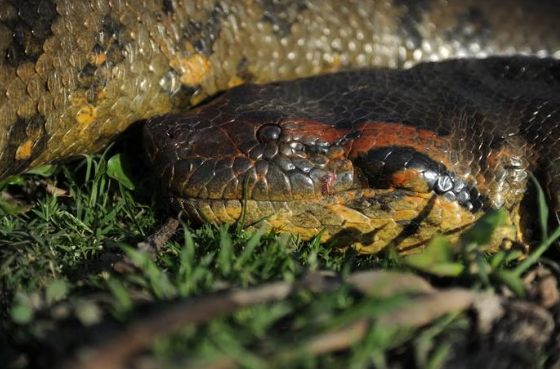Northern Green Anaconda: New Snake Species
A team of scientists on location with a film crew in the remote region of Amazon Forest has recently identified a previously undocumented species of giant anaconda.
Professor Bryan Fry from The University of Queensland led a team which captured and studied several specimens of the newly named northern green anaconda (Eunectes akayima).
Location
The new giant snake species was located in the Bameno region of Baihuaeri Waorani Territory in the Ecuadorian Amazon.
The team received an invitation from the Waorani people to explore the region and collect samples from a population of anacondas, rumoured to be the largest in existence. The indigenous hunters helped the team for a 10-day expedition to search for these snakes, which they consider sacred.
Features of the New Species
One female anaconda the team encountered measured a record 6.3 metres long. There are anecdotal reports from the Waorani people of other anacondas in the area measuring more than 7.5 metres long and weighing around 500 kilograms.
The northern green anaconda species diverged from the southern green anaconda almost 10 million years ago, and they differ genetically by 5.5 per cent.
The new anaconda species was found while filming with National Geographic for their upcoming Disney+ series Pole to Pole.
Environmental Concerns in Amazon
Deforestation of the Amazon basin from agricultural expansion has resulted in an estimated 20-31 per cent habitat loss, which may impact up to 40 per cent of its forests by 2050.
Another alarming problem is habitat degradation from land fragmentation, led by industrialised agriculture and heavy metal pollution associated with spills from oil extraction activities.
Forest fires, drought and climate change are also notable threats. These rare anacondas, and the other species that share this remote ecosystem, face significant challenges due to the environmental threats.
Researchers are looking into how petrochemicals from oil spills are affecting the fertility and reproductive biology of these rare snakes and other keystone species in the Amazon.
Category: Environment Current Affairs


